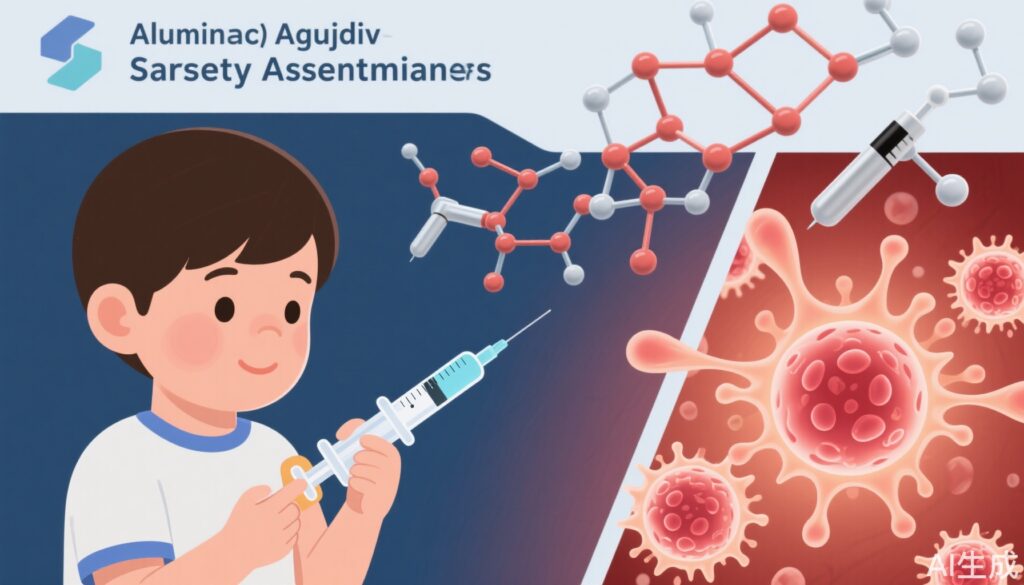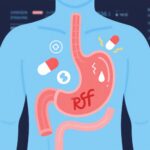Highlight
This large-scale nationwide cohort study from Denmark evaluated over 1.2 million children born between 1997 and 2018 to assess the safety of aluminum-adsorbed vaccines administered in early childhood. The study found no increased risk of 50 chronic disorders, including autoimmune, atopic or allergic, and neurodevelopmental conditions, associated with cumulative aluminum exposure from vaccines. Adjusted hazard ratios per 1 mg increase in aluminum exposure were close to unity, indicating no significant risk elevation.
Clinical Background and Disease Burden
Aluminum salts are widely used as adjuvants in nonlive vaccines to enhance immunogenicity by adsorbing vaccine antigens and stimulating a stronger immune response. Common childhood vaccines containing aluminum adjuvants include those against diphtheria, tetanus, pertussis, Haemophilus influenzae type b (Hib), pneumococcal conjugate vaccine (PCV), and hepatitis A and B. Despite their extensive use and established benefits, concerns have persisted regarding potential long-term safety issues, specifically the risk of chronic autoimmune diseases, atopic or allergic disorders, and neurodevelopmental conditions such as autism spectrum disorder (ASD) and attention deficit–hyperactivity disorder (ADHD). These concerns have contributed to vaccine hesitancy among some populations.
Chronic autoimmune and allergic diseases in children represent a substantial public health burden due to their chronicity, impact on quality of life, and healthcare costs. Neurodevelopmental disorders such as ASD and ADHD affect millions of children worldwide and have multifactorial etiologies, with environmental and genetic factors implicated. Given the widespread administration of aluminum-containing vaccines during the critical early years of immune and neurodevelopmental maturation, rigorous evaluation of any potential association is essential.
Methodology
This retrospective cohort study leveraged comprehensive Danish national registries, linking vaccination records, clinical diagnoses, and confounder data from 1997 to 2020. The cohort included 1,224,176 children born between 1997 and 2018 who were alive and resident at age 2 years, ensuring capture of early vaccination exposures and follow-up for incident chronic disorders.
Exposure was quantified as cumulative aluminum dose (in mg) received through vaccination during the first 2 years of life. The aluminum content of vaccines varied over time, allowing for natural exposure variation to be assessed. The study evaluated incident diagnoses of 50 chronic disorders categorized as autoimmune (including dermatologic, endocrinologic, hematologic, gastrointestinal, and rheumatic diseases), atopic or allergic (including asthma, atopic dermatitis, rhinoconjunctivitis, and allergy), and neurodevelopmental disorders (specifically ASD and ADHD).
Cox proportional hazards models adjusted for multiple confounders were used to estimate hazard ratios per 1-mg increase in aluminum exposure. Individual medical records were not reviewed; diagnoses were registry-based.
Key Findings
The analysis demonstrated no statistically significant association between cumulative aluminum exposure from vaccines and increased risk of the chronic disorders studied. Adjusted hazard ratios per 1-mg increase in aluminum were 0.98 (95% CI, 0.94 to 1.02) for any autoimmune disorder, 0.99 (95% CI, 0.98 to 1.01) for any atopic or allergic disorder, and notably 0.93 (95% CI, 0.90 to 0.97) for any neurodevelopmental disorder, suggesting even a slight inverse association for the latter.
For most individual outcomes, the upper bounds of 95% confidence intervals excluded relative risk increases greater than 10% or 30%, reinforcing the robustness of the null findings. The study thereby provides strong evidence against moderate or large increases in risk attributable to aluminum adjuvant exposure during early childhood vaccination.
Controversies and Limitations
While registry-based cohort studies offer large sample sizes and comprehensive data, reliance on diagnostic codes without individual medical record validation may introduce misclassification bias. However, Danish registries are known for high quality and completeness. Residual confounding cannot be entirely excluded despite adjustments. The study did not assess potential small relative risk increases for rare disorders with limited statistical power.
Despite public concerns, this study’s findings align with the current scientific consensus that aluminum adjuvants in vaccines are safe and not associated with chronic autoimmune, allergic, or neurodevelopmental disorders. Nonetheless, ongoing pharmacovigilance and mechanistic research remain important to monitor vaccine safety continuously.
Conclusion
This comprehensive nationwide Danish cohort study provides robust evidence that early childhood exposure to aluminum-adsorbed vaccines does not increase the risk of a broad spectrum of chronic autoimmune, atopic or allergic, or neurodevelopmental disorders. These findings support the continued use of aluminum-containing adjuvants in childhood vaccines as safe components of immunization programs. The study contributes valuable reassurance for clinicians, policymakers, and the public to counter vaccine hesitancy grounded in safety concerns about aluminum adjuvants.
References
1. Exley C. The toxicity of aluminum in humans. Morphologie. 2021;105(349):51-56.
2. Hem SL, Hogenesch H. Relationship between physical and chemical properties of aluminum-containing adjuvants and immunopotentiation. Expert Rev Vaccines. 2007;6(5):685-698.
3. Andersson NW, Bech Svalgaard I, Hoffmann SS, Hviid A. Aluminum-Adsorbed Vaccines and Chronic Diseases in Childhood: A Nationwide Cohort Study. Ann Intern Med. 2025 Jul 15. doi: 10.7326/ANNALS-25-00997 IF: 15.2 Q1 . Epub ahead of print. Erratum in: Ann Intern Med. 2025 Jul 17. doi: 10.7326/ANNALS-25-03233 . PMID: 40658954 IF: 15.2 Q1 .



